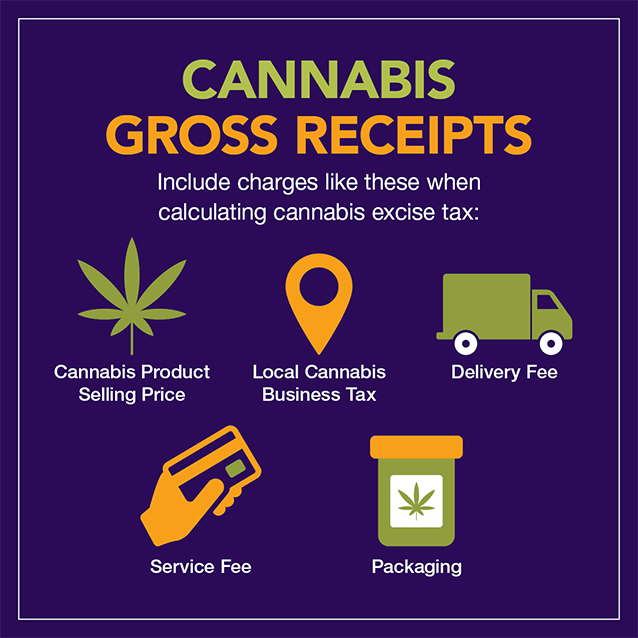By Ken Magri
Despite the legal cannabis market initially seen as a golden enterprise for generating local tax revenues, Sacramento dispensary owners say they are increasingly unable to turn a profit. There is concern among these local business owners about high overhead costs, competition from unlicensed sellers and especially, multiple tax rates.
“Dispensary sales within the city of Sacramento have significantly declined over recent years, largely impacted by the economic downturn,” said Kimberly Cargile, an advocate for the National Cannabis Industry Association since 2007 and CEO of A Therapeutic Alternative dispensary since 2012. “Sacramento is currently overtaxing cannabis businesses, and in my opinion the tax is discriminatory.”
Outgoing Sacramento City Councilmember Katie Valenzuela echoed Cargile’s comment. “I’ve been hearing from businesses throughout the city that the high costs are hampering their ability to survive,” she said. “Reports of layoffs in an industry that employs a diversity of Sacramento residents are troubling. No one benefits if these businesses are unable to survive current market conditions.”
While over-regulation and competition from unlicensed sellers create separate problems, high taxes remain the largest concern because they drive prices up. Cargile feels that such high prices are “inadvertently boosting the unlicensed market.”
Multiple layers of taxation

Sacramento’s cannabis tax is a combination of state and local excise and sales taxes. Retail sales of cannabis products are subjected to a 15% statewide excise tax on “gross receipts,” which are defined as the total amount of money a transaction takes in, including taxes. There is also a regular California state sales tax at 7.25%. Sacramento adds its own 1.5% city sales tax and a 4% excise tax on gross receipts.
Because the local 4% excise tax is subject to sales tax, it creates a double taxation. Javier Hernandez, CEO and founder of cannabis delivery service Humble Root, illustrated this using a $35 cannabis product with an $8 service and delivery fee. With that amount totaling $43, the local excise tax would be an additional $1.72, and the state excise tax another $6.45 and then California and Sacramento sales tax combined to add $4.48 for a grand total cost of $55.65.
“Another problem lies on that 4% [local] excise tax, which typically turns into 8%, 12% or even 16%,” Hernandez said. And the problem lies in the changing of hands, essential to most consumer products.
For example, if the cannabis is grown locally, the grower levies a 4% tax to the manufacturer, who then might turn the raw product into concentrates like distillate oil for vapes, levying that tax again when selling to a distributor. If the distributor then sells to a dispensary, the tax is levied again. And if all transactions were local, a final local excise tax would be levied at the point of sale. All of this adds up and increases the final cost of the product for the consumer.
High tax rates also fall on dispensaries that are required to pay a yearly business operations tax of 4% of gross receipts. “Unlike Walmart or literally any other business in Sacramento,” said Hernandez, “we have no cap on our yearly tax, so this can be astronomical.”
Mindy Galloway, co-owner of The Pocket Dispensary, said it doesn’t stop there. “A lot of our profit goes not just to city taxes, but to IRS taxes, and retail gets hit the hardest,” she said. Galloway is referring to IRS section 280E, which forbids the deduction of ordinary business expenses because it associates cannabis sales with the “trafficking” of Schedule I or II substances. The high overhead “is not sustainable,” Galloway said.
The threat from unlicensed cannabis

Legal cannabis is California’s third largest cash crop at $5 billion annually. But the unlicensed market is estimated to be twice as large. It became widespread in the 1970s and grew over the decades so that, by 2010, 79% of the nation’s unlicensed cannabis supply came from California.
Back in 2016, supporters of California’s Proposition 64 argued that lowering legal cannabis prices would drive the unlicensed market away. But after it passed, the cannabis industry divided into a large unlicensed side and a fledgling legal side with a high financial barrier to entry. “It normally costs hundreds of thousands to millions of dollars to open up a license,” Galloway said. “Capital is by far the hardest thing to navigate.”
Many existing businesses didn’t have that kind of start-up money. “Most in the California weed business knew this, which is why, when faced with the reality, they preferred to stay illegal and off the grid,” Robin Goldstein and Daniel Sumner wrote in their 2022 book “Can Legal Weed Win?”
Seven years later, two of every three cannabis purchases in California are still illegal, according to the nonprofit news service CalMatters. Seemingly, the prices for legal cannabis have not come down enough to threaten the unlicensed market.
“The high tax rate assessed by state and local government is only fueling the continued illicit market,” Councilmember Valenzuela said. “It is hurting our young people as well as the business owners who are seeking to follow the law.”
Since 2020, the average intake from state taxes alone averages well over a billion dollars per year, according to the California Department of Tax and Fee Administration. Sacramento’s own cannabis tax revenues since 2017 have averaged $13 million annually.
According to the Sacramento Comprehensive Cannabis Study by the Economic & Planning Systems Inc. (EPS), “Business operations taxes are the largest revenue source for cannabis operation in the City, anticipated to generate $20.7 million in [fiscal year] 21/22 (73% of all business operations taxes generated in the City).”
Other cities have lowered their taxes

Since 2023, several other California cities voted to lower cannabis taxes. Cathedral City, which averages $4.4 million in retail sales, cut its retail tax from 10% to 5%. The city also lowered its taxes on cultivation and manufacturing. After two years of decreased sales, Palm Desert was willing to cut its expected annual revenue by $1.2 million and lowered its tax on gross sales from 10% to 5%.
But the City of Santa Ana did the most by cutting sales, cultivation and manufacturing taxes. It created additional reductions for social equity businesses and legalized on-site consumption at any business licensed for it. “These changes to our cannabis laws will help our Santa Ana operators remain competitive in an industry that creates local jobs while also producing new tax revenues that help pay for city services,” said City Manager Kristine Ridge on the city’s official website.
Could Sacramento do the same? According to Davina Smith, program manager for the city’s Office of Cannabis Management, Sacramento’s customer base is big enough to compensate for local taxes. “Storefront dispensaries play a vital role in serving the broader Sacramento area, attracting customers from neighboring jurisdictions where cannabis businesses are not permitted,” Smith said. “This unique position allows Sacramento to establish more dispensaries than the population of Sacramento alone could sustain.”
But Councilmember Valenzuela does see a need for tax reductions. “Ideally, the change would come from the state or federal government, but in lieu of action at those levels, the council is able to adjust our local business tax within the 4% rate,” she said.
Valenzuela says she is currently in conversations with colleagues about how to best proceed, and is “hopeful for more conversations this spring.” Meanwhile, Cargile urges city council members “to consider the bottom line reflected in our profit and loss statements when making decisions, rather than solely focusing on revenue.”
This story is part of the Solving Sacramento journalism collaborative. Solving Sacramento is supported by funding from the James Irvine Foundation and the James B. McClatchy Foundation. Our partners include California Groundbreakers, Capital Public Radio, Outword, Russian America Media, Sacramento Business Journal, Sacramento News & Review, Sacramento Observer and Univision 19.


Be the first to comment on "Sacramento cannabis dispensaries fight to stay afloat under layered taxation system"